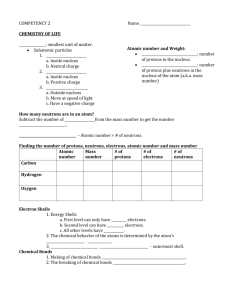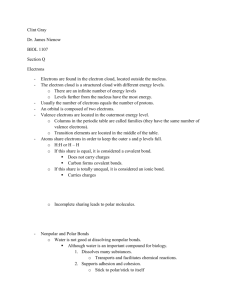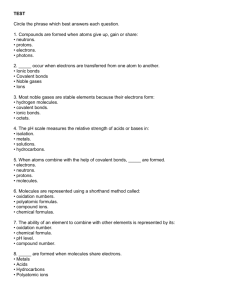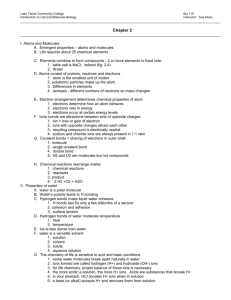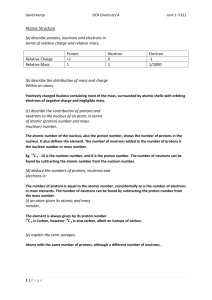Biochemistry I: Of Atoms, Ions and Molecules Answers to Study
advertisement
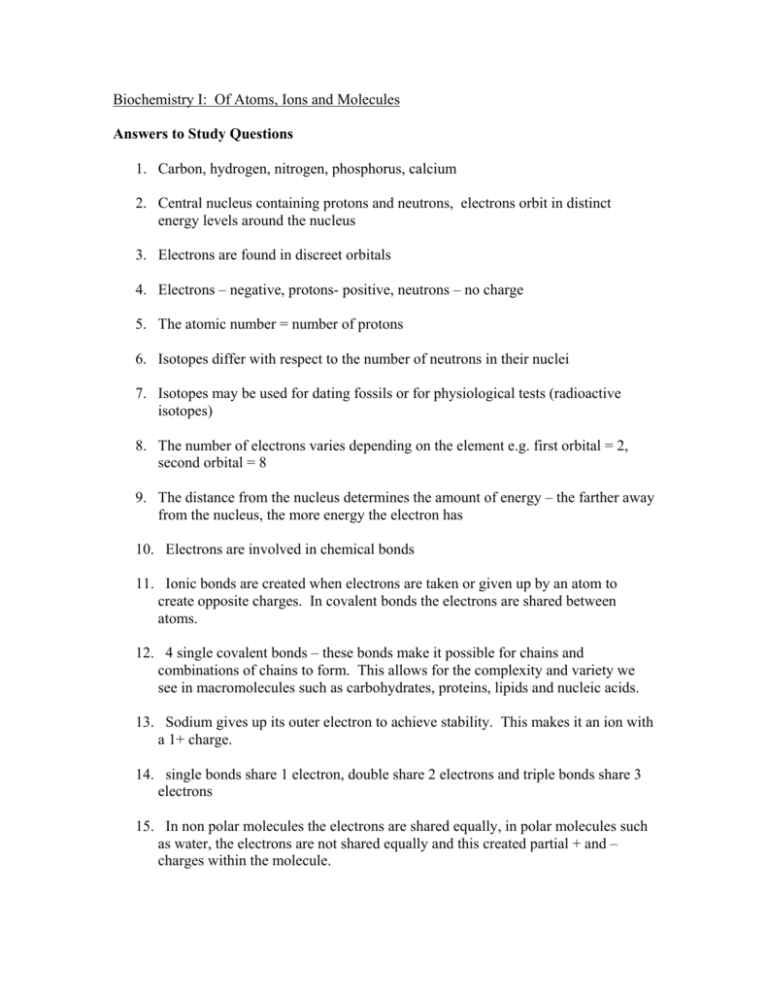
Biochemistry I: Of Atoms, Ions and Molecules Answers to Study Questions 1. Carbon, hydrogen, nitrogen, phosphorus, calcium 2. Central nucleus containing protons and neutrons, electrons orbit in distinct energy levels around the nucleus 3. Electrons are found in discreet orbitals 4. Electrons – negative, protons- positive, neutrons – no charge 5. The atomic number = number of protons 6. Isotopes differ with respect to the number of neutrons in their nuclei 7. Isotopes may be used for dating fossils or for physiological tests (radioactive isotopes) 8. The number of electrons varies depending on the element e.g. first orbital = 2, second orbital = 8 9. The distance from the nucleus determines the amount of energy – the farther away from the nucleus, the more energy the electron has 10. Electrons are involved in chemical bonds 11. Ionic bonds are created when electrons are taken or given up by an atom to create opposite charges. In covalent bonds the electrons are shared between atoms. 12. 4 single covalent bonds – these bonds make it possible for chains and combinations of chains to form. This allows for the complexity and variety we see in macromolecules such as carbohydrates, proteins, lipids and nucleic acids. 13. Sodium gives up its outer electron to achieve stability. This makes it an ion with a 1+ charge. 14. single bonds share 1 electron, double share 2 electrons and triple bonds share 3 electrons 15. In non polar molecules the electrons are shared equally, in polar molecules such as water, the electrons are not shared equally and this created partial + and – charges within the molecule. 16. Hydrogen bonds are intermolecular (between molecules) and they occur between the partially positive H and partially negative atoms such as O to form a weak attraction between molecules. 17. Water is neutral because it contains an equal number of H+ and OH – ions. 18. Water is the solvent of life because it is polar and can therefore dissolve other polar molecules such as NaCl and biologically important molecules such as proteins and carbohydrates. 19. Acids release H+ ions 20. Bases release OH- ions 21. A neutralization reaction occurs when an acid is mixed with a base. 22. pH scale measures the number of H+ ions in solution. 23. buffers 24. 7.1-7.4 25. Chemical reactions depend on a narrow range of pH in order to proceed – H+ and OH- ions interfere with certain reactions.
